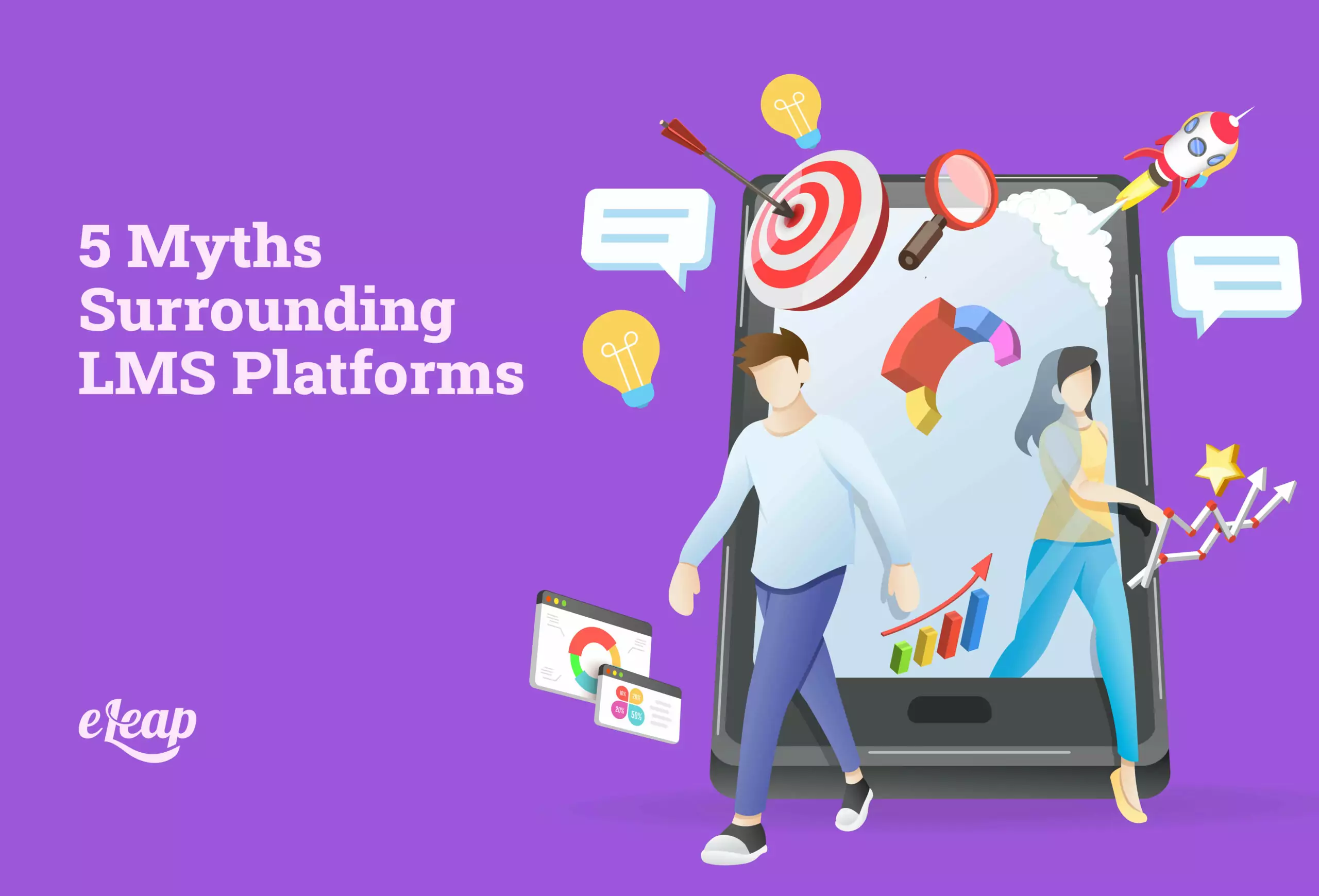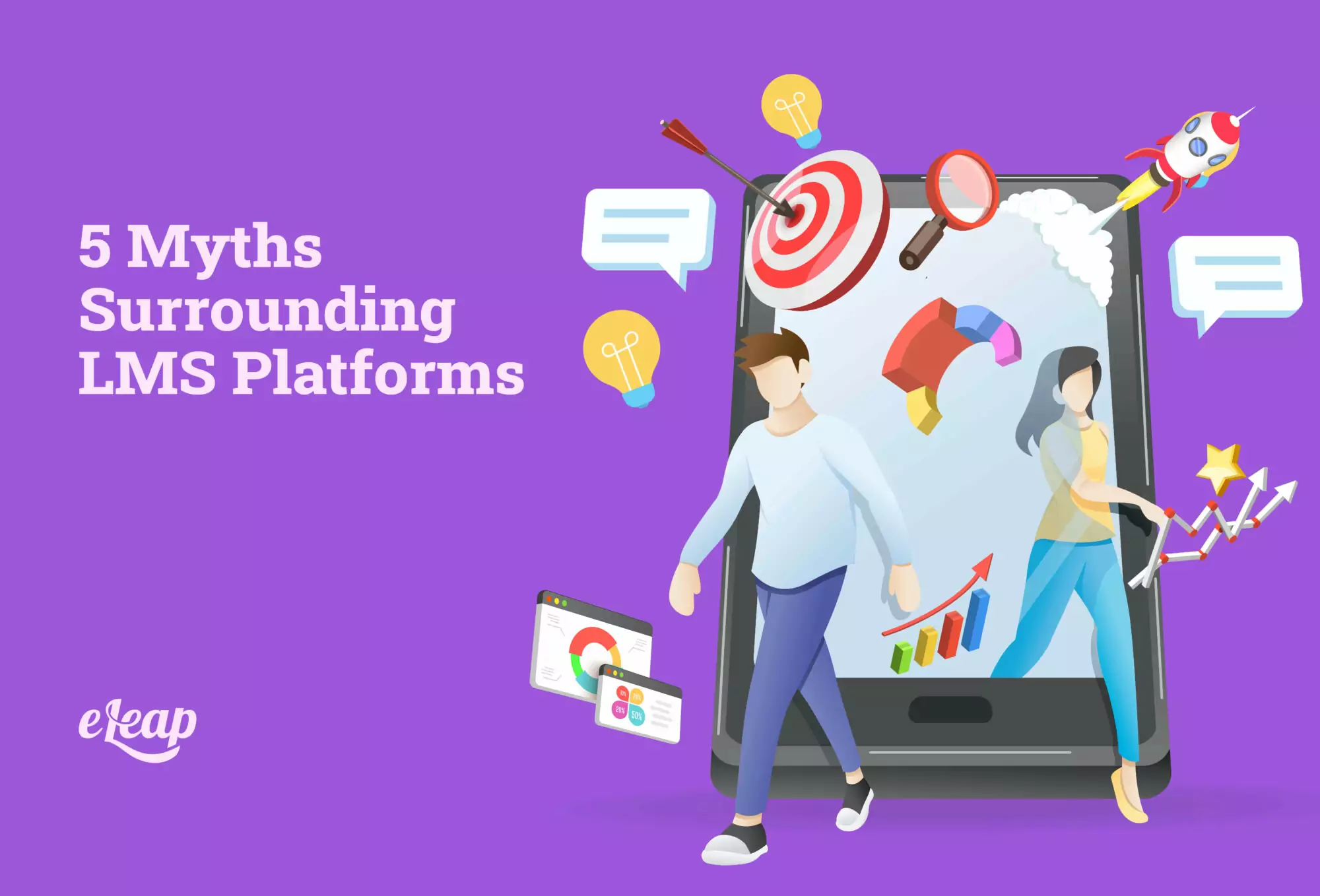5 Myths Surrounding LMS Platforms

The humble LMS has become a crucial part of corporate learning and employee onboarding. Most established corporate organizations are familiar with the LMS and incorporate it into their hiring and educational process.
However, for the uninitiated, lacking an LMS platform means missing out on significant benefits. Unfortunately, most organizations don’t incorporate an LMS because of myths surrounding these eLearning platforms.
All that is necessary to understand the benefits of a quality LMS platform is to study the results of companies that use them. There is no denying how beneficial eLearning has become in the corporate world.
Even still, these benefits are overlooked because of misinformation regarding LMS. If you have received false knowledge regarding your LMS or have been holding back because of these myths, this article is for you. These are the top five myths surrounding eLearning platforms.

1. The LMS Is An Expense Instead of An Investment
You may have received false information from certain sources that your LMS is an expense and not an investment. This couldn’t be further from the truth.
An expense is defined as any cost an organization incurs that may not generate a return. Investments are the exact opposite.
When organizations invest, there is an expected level of return to that investment that generates future revenue. By our measurements, an LMS pays dividends.
Not only are you efficiently training your new team members, but you’re doing it in a way that can be optimized. An LMS allows you to gauge what is working and what isn’t, allowing you to turn your platform into a well-oiled machine.
If allocating funds for the future employees of your company isn’t an investment, it’s hard to figure out what is. Make no mistake, the right LMS platform is a smart investment.
2. Your LMS ONLY Delivers eLearning
One myth surrounding LMS is the rumor that LMS only delivers eLearning. However, this is more false information.
While eLearning is a part of an LMS, and years ago this statement may have been true, things have changed. LMS platforms deliver virtual classrooms, social learning, and continued learning options.
LMS platforms are much more than one-dimensional learning tools. With the right platform, education is delivered in multiple ways that engage employees.
3. Your LMS Is Not Time Critical
This myth could be true, but only depending on what platform you’re speaking from. If your organization doesn’t put emphasis on employees learning at the most efficient pace for them, then it’s true.
However, using that line of thinking usually proves detrimental in the long run anyway. The way most organizations are structured, team members currently play multiple roles.
When your LMS platform doesn’t allow remote learning at a personal pace, the effects could be negative. Research shows that most employees thrive when they can learn at their chosen speed.
The more important point should be the matter of the most important element. Is quickness or efficient digestion of the material more important?
When it comes to producing the most capable team members, efficiency should be the most concerning dynamic. The rate team members learn becomes irrelevant if the material isn’t digested in the right way.
Organizations should spend less time concerning themselves with time-critical elements and more time ensuring the appropriate content is available to new hires. This is the only way to properly groom the team members of tomorrow.
4. The LMS Administration Is a Lot of Work
This is another myth that may have been true in the past. However, most current LMS platforms perform administrative work on an automated basis.
The most important role the administrator or management has is breaking down data and ensuring the platform and user interface are updated. Most of the manual labor involved with admin work is performing simple checkups and examining metrics.
Rather than make judgments regarding performance and completion, the platform does it all for you. Administrators must break down this data and decide on the most appropriate course of action. Then you can let the platform do the rest of the work.
5. LMS Adoption Is a Challenge
LMS adoption is indeed challenging, but nothing worth having is ever easy. If you want to reap the results of any efficient program, you must hold up your end of the bargain.
It is challenging in the sense that it’s different and involves a learning curve. However, on the other side of that learning curve is the opportunity to produce more efficient team members.
If you’re looking to an LMS to be a miracle program, perhaps your motivations are misplaced to begin with. You can’t snap your fingers and force a more efficient learning platform to appear.
Your organization must do the work to adopt the program, and this takes time and effort. Besides, learning the platform thoroughly should be a bigger priority than worrying about the process being easy.
When you look to programs that promise easy adoption and an overnight miracle, you should tread carefully. If something sounds too good to be true, it probably is.
No quality LMS promises an easy adoption and effortless deployment. However, what is promised is that with the proper understanding and attention to detail, you can craft a platform that molds team members into exactly what your organization is looking for.
Takeaways
Sometimes, myths and false information are spread and give programs a bad name. Other times, the disappointment comes as a result of misplaced expectations and a lack of proper effort.
If you have questions regarding any LMS, most platforms provide trial periods that allow you to get a feel for your investment. However, if you’re looking for a magic tool that fixes everything overnight with no effort on your part, most likely you’ve set yourself up for failure already.
Keep your expectations realistic and be honest with yourself about your goals. If you want full-time results, you should be prepared to put in a full-time effort. Doing your part is the only way to produce the results you want in the end.